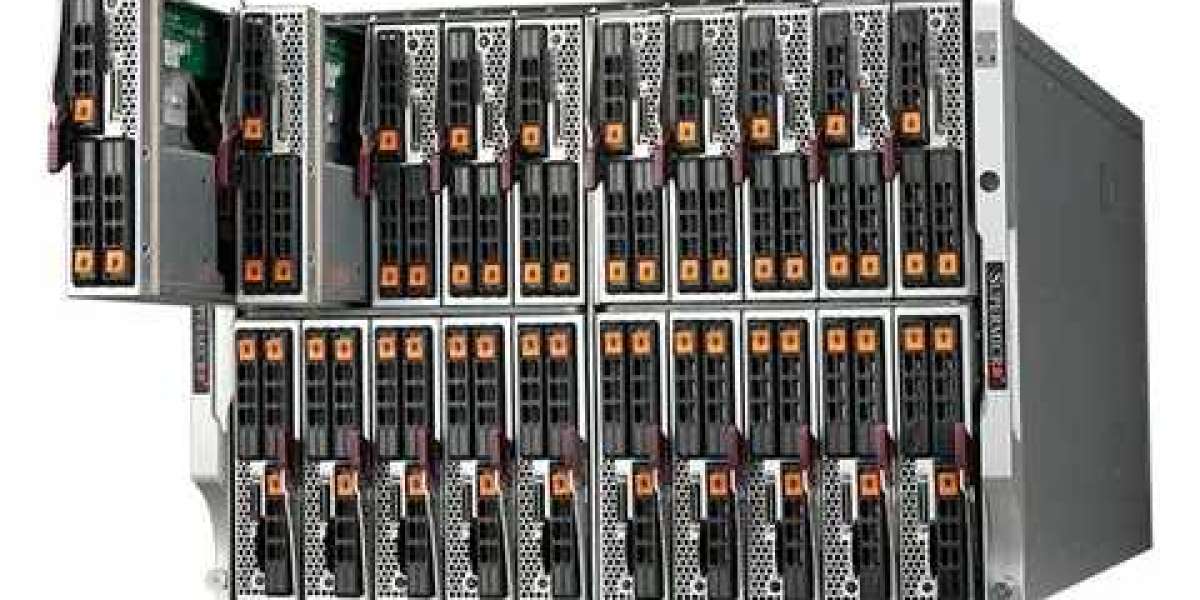Blade servers have become increasingly popular in modern data centers due to their compact size, high density, and efficient power usage. In this article, we will explore the advantages and disadvantages of blade servers and how they can benefit businesses.
H2: What are Blade Servers?
Blade servers are modular servers that are designed to fit into a chassis, which can hold multiple blades. Each blade contains a processor, memory, storage, and network connectivity, making it a complete server. Blade servers are designed to be hot-swappable, meaning that they can be removed or replaced without shutting down the entire system.
Advantages of Blade Servers
- High Density
Blade servers are designed to be highly compact, allowing data centers to fit more servers in a smaller space. This can lead to significant cost savings by reducing the amount of physical space required to house servers.
- Scalability
Blade servers are designed to be easily scalable, allowing businesses to add or remove servers as needed without disrupting the entire system. This can be particularly useful for businesses that experience sudden spikes in demand or seasonal variations in workload.
- Efficiency
Blade servers are designed to be highly efficient in terms of power usage, allowing businesses to reduce their energy consumption and associated costs. Additionally, blade servers can be configured to run on a shared power and cooling infrastructure, further reducing energy consumption.
- Easy Maintenance
Blade servers are designed to be easily maintainable, with hot-swappable components that can be replaced without shutting down the entire system. This can reduce downtime and maintenance costs, as well as make it easier to keep the system up-to-date with the latest hardware.
Disadvantages of Blade Servers
- Initial Cost
Blade servers can be more expensive than traditional rack-mounted servers, as they require a chassis and other supporting infrastructure. However, this cost can be offset by the increased density and efficiency of blade servers.
- Limited Upgradability
Blade servers are designed to be modular and easily replaceable, but this can also limit their upgradability. Upgrading individual components can be more difficult and expensive than replacing entire blades, which can limit the ability to keep up with the latest hardware.
- Network Complexity
Blade servers require a more complex network infrastructure than traditional servers, as each blade requires its own network connection. This can increase the complexity of the network and require additional resources to manage.
- Cooling Requirements
Blade servers generate more heat than traditional servers, requiring additional cooling infrastructure to maintain a stable operating environment. This can increase energy consumption and associated costs.
Leveraging LSI Keywords for Blade Servers
To optimize the effectiveness of the article, it is important to include LSI keywords, which are semantically related terms that are frequently used in the context of blade servers. Some examples of LSI keywords include modular servers, data center infrastructure, hot-swappable components, virtualization, and converged infrastructure.
Blade Servers and Virtualization
Blade servers are particularly well-suited for virtualization, which allows businesses to run multiple virtual servers on a single physical server. Blade servers can be configured with high amounts of memory and processing power, allowing them to support multiple virtual machines without sacrificing performance.
Converged Infrastructure and Blade Servers
Blade servers are often used as part of a converged infrastructure, which combines compute, storage, and networking resources into a single system. Converged infrastructure can be particularly useful for businesses that require a flexible and scalable IT infrastructure that can adapt to changing business needs.
Conclusion:
In conclusion, blade servers are a powerful and versatile tool for modern data centers. They offer numerous advantages, such as high density, scalability, efficiency, and easy maintenance. However, they also have some disadvantages, including initial cost, limited upgradability, network complexity, and cooling requirements. Despite these challenges, blade servers are likely to continue to be an important part of modern data centers, especially as businesses seek to leverage virtualization and converged infrastructure to create more flexible and scalable IT environments. As technology continues to evolve, it will be interesting to see how blade servers continue to adapt and improve to meet the needs of businesses in the future.



